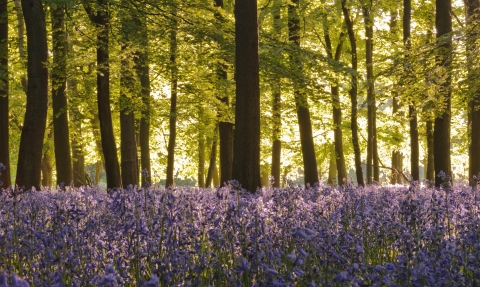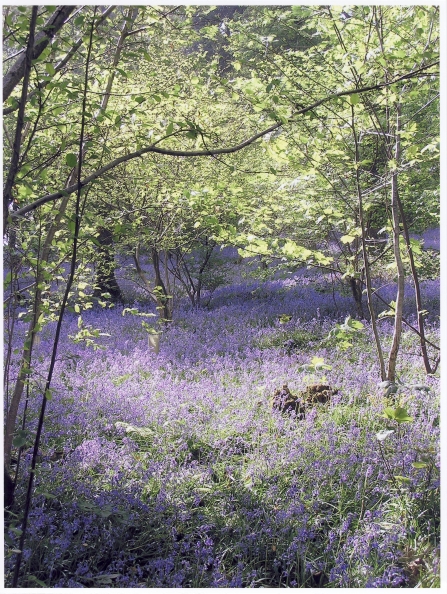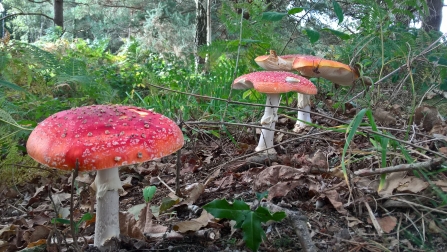
Photo, Andrew Mason
In the woods
Trees only cover around 11.8% of Devon – slightly less than the national average
But don’t play down the beauty of our county’s woodlands
Halsdon. Photo, Kevin New
- Most of Devon’s woodland is dominated by oak trees, but birch, rowan, hazel and holly all jostle for space too
- Our Halsdon, Andrew’s Wood, Dart Valley, Warleigh Point, Uppacott Wood and Dunsford nature reserves all provide wonderful woodland walks

Lady's Wood. Photo, Dave Pugsley
Waves of blue
Devon’s woodlands in spring are a joy. Walking through wild garlic and waves of bluebells becomes a heady, captivating experience.
Badgers build often build their setts in woodland. These massive earthworks and their well-worn paths through undergrowth can be centuries old. Look too for roe deer and fallow deer as they move through the trees.
Woodpeckers, nuthatches and tree creepers will all use holes in trees as nest sites. Bats, including brown long-eared and pipistrelle bats, will also use these holes and crevices.
As summer warms the woodland its worth looking along path edges for butterflies including speckled woods, silver-washed fritillaries and perhaps, if you are lucky, the beautiful, slow-flying wood white.
Our woods and trees are home to a huge variety of wildlife! Hedgerows, copses, woods and clearings make up vital habitat links, connecting wildlife across different landscapes.DWT

Fly agaric at Bovey Heathfield
Autumn fruiting
Autumn brings out the fruiting bodies of woodland fungi. Dead wood and the woodland floor are the places to look. Once you get your eyes trained for their weird shapes and wonderful colours, a fungi hunt is great fun!
This season sees a race against time for another woodland resident, the hazel dormouse. It must build up its fat reserves on a woodland autumn diet of nuts and berries before the first frosts signal it is time to hibernate.
As winter takes over a late afternoon walk will bring you in contact with the sounds of the wood. The crunch of your feet on frost coated leaves will mix with the territorial screeches of tawny owls and the courting calls of foxes.
Find out more about a species you've seen
Become a member and support our work
The vital work we do for nature depends on the support of people who care about the future of Devon’s wildlife and wild places.
